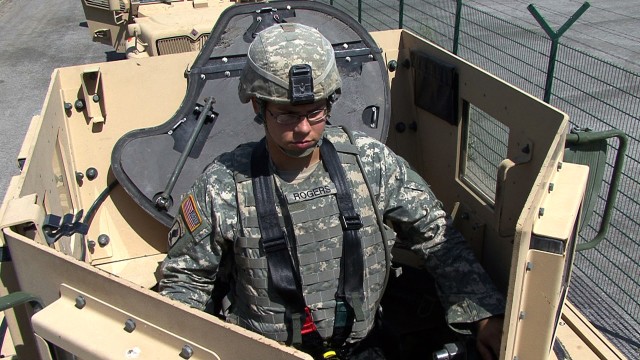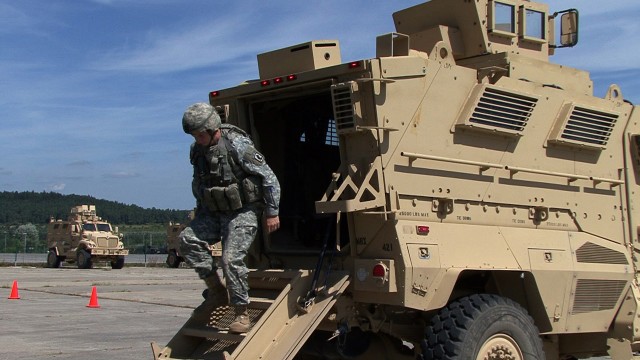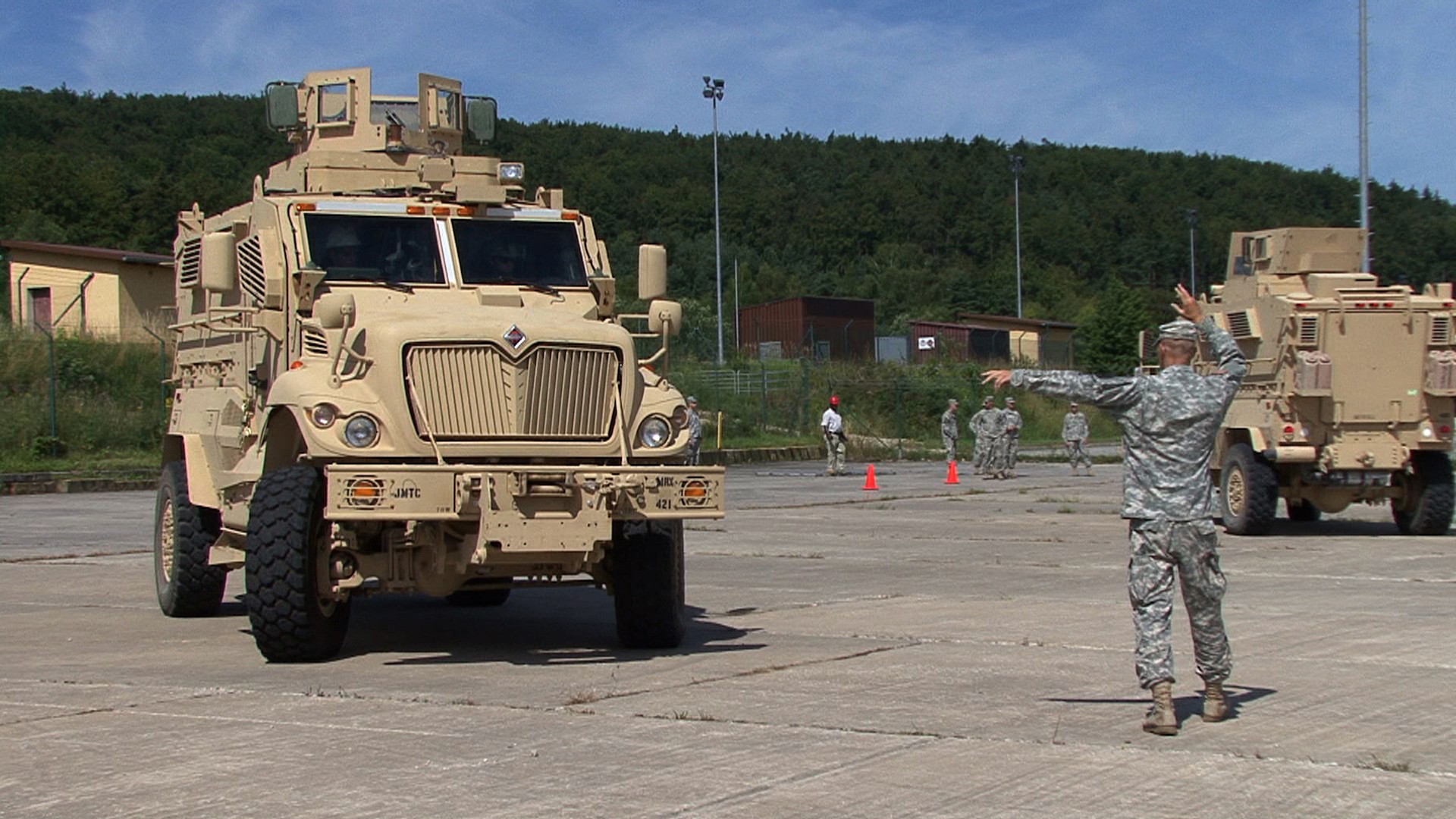HOHENFELS, Germany - Soldiers from the 173rd Airborne Brigade Combat Team were the first European-based troops to attend the 7th Army Joint Multinational Training Command's initial Mine Resistant Ambush Protected, or MRAP, Operators Course during the last week of July at the Joint Multinational Readiness Center in Hohenfels, Germany.
The MRAPs are new to the training program in U.S. Army, Europe. In July, 40 MaxPro Category 1 MRAPs were shipped from Kuwait to JMTC for use in Mission Rehearsal Exercises and vehicle familiarization for USAREUR Soldiers before they are deployed downrange.
With more than 10 tons of armor plating and a full suite of advanced improvised explosive device countermeasures, the U.S. Army believes the MRAP vehicle is the most sophisticated and safe vehicle for combat convoy operations.
Yet, one of the MRAPs most important safety devices is a piece of buckled nylon fabric, known as the Gunner Restraint System.
A flipped MRAP is especially dangerous for Soldiers in the topside gunner position on the truck. To combat this problem, the MRAP course teaches Soldiers how to wear and use the GRS, a seatbelt harness that attaches to the floor of the MRAP to keep the gunner inside the vehicle in case of a rollover.
"With this new GRS system, at least it keeps the gunner inside the vehicle," said course instructor Gary Smith. "It keeps him restrained where he's not ejected from the top of the vehicle."
Although Smith said rollovers have been the culprit in most of the casualties associated with the MRAPs, they are easily avoided by using common sense, understanding the road conditions and knowing what the MRAPs can and can't do.
The five-day course gave the Soldiers a comprehensive introduction to the MRAP, using both classroom and hands-on instruction. The Soldiers also were given a chance to get behind the wheel of the 28,000-pound truck, where they were required to maneuver it through an obstacle course to get a feel for driving the top-heavy vehicle.
"You don't really realize how long and how high off the ground you are," said Cpl. Andrew Therens, a student in the course. "You have to turn slow or you're afraid you might flip it."
While the MRAPs can operate on straight stretches of paved road at speeds over 65 mph, Soldiers must keep the MRAPs under 20 mph during the course, and even slower when turning to prevent a rollover.
"This truck is extremely tall," said Smith. "You put Soldiers in these trucks that haven't been properly trained and you get a lot of accidents."
"Speed is a real killer in these trucks. Our Soldiers have got to slow them down, and that keeps them safe," said Smith.
"It's not much different than operating your vehicle back home," said Smith. "Basically, this is the same type chassis and cab that commercial truck drivers drive."
The MRAP Operators Course at Hohenfels will certify Soldiers to drive the MRAPs, but it is only the beginning of their training. When they deploy, they will receive an extensive 40-hour course in-theater to build on the basic skills that JMTC teaches back in Germany.
Therens - who survived an IED attack on his up-armored Humvee in Afghanistan during his last deployment - is now more comfortable with the safety features that MRAPs provide to Soldiers and more confident to return downrange after taking the MRAP course.
"Any additional training you get before you go downrange is better," Therens said. "Any extra chance you get to train on the equipment you're going to use is always a plus."












Social Sharing